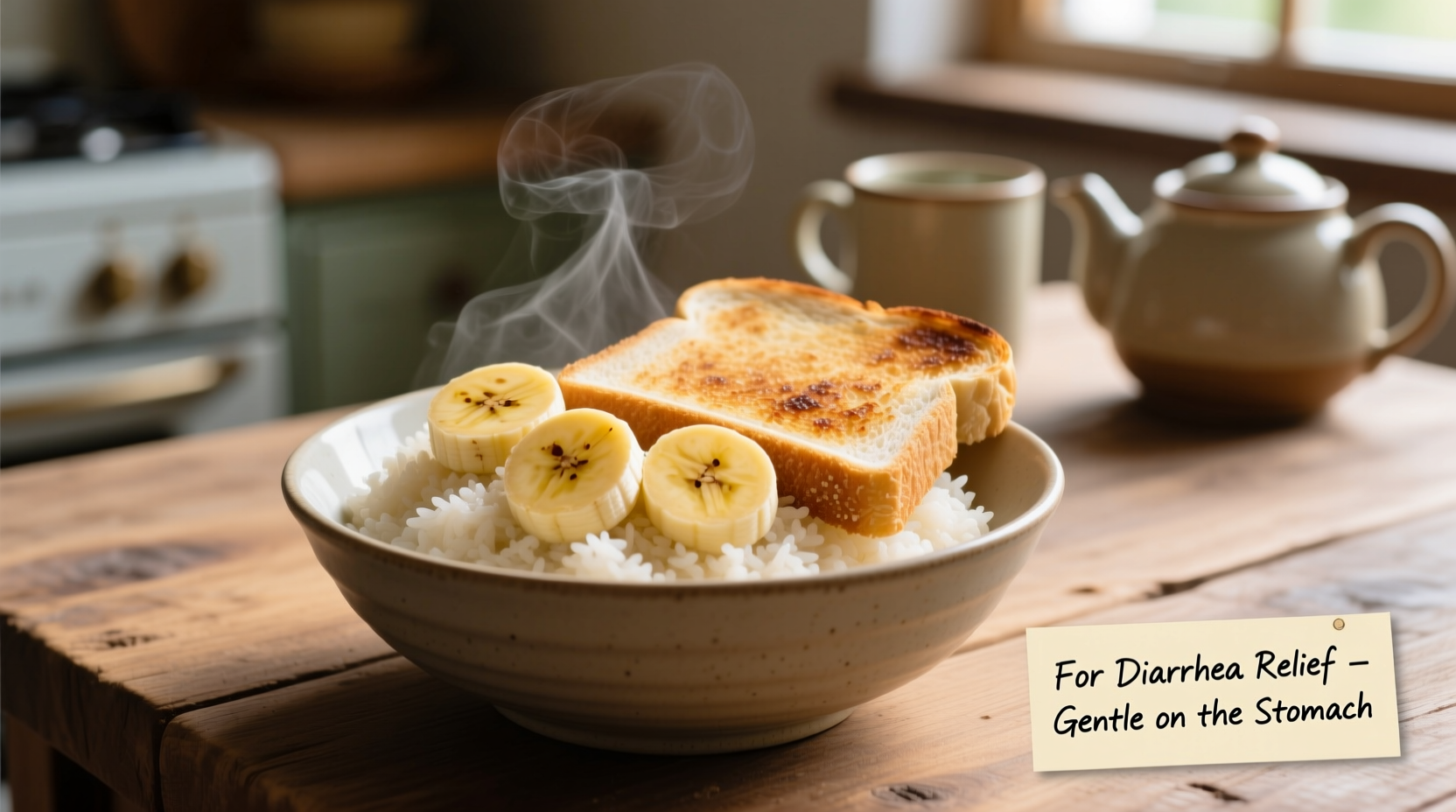Dealing with diarrhea can leave you feeling weak and uncomfortable, but the right food choices can significantly speed your recovery. This evidence-based guide provides immediate dietary solutions that medical professionals recommend for managing diarrhea symptoms effectively.
Immediate Relief: What to Eat in the First 24 Hours
During acute diarrhea episodes, your digestive system needs gentle, binding foods that won't irritate your sensitive gut. Research from the Mayo Clinic shows that certain foods can reduce stool frequency within hours:
- BRAT diet staples: Bananas (rich in potassium), white rice (binding effect), applesauce (pectin content), and dry toast (easy to digest)
- Clear broths: Chicken or vegetable broth provides essential electrolytes without fat
- Oral rehydration solutions: WHO-recommended formulas better than sports drinks for replacing lost fluids
Registered dietitians at Johns Hopkins Medicine emphasize that small, frequent sips of fluids work better than large amounts at once. Aim for 4-8 ounces every 30 minutes while symptoms are active.
| Recommended Immediately | Avoid Completely |
|---|---|
| White rice | Whole grains |
| Boiled potatoes | Raw vegetables |
| Plain crackers | Dairy products |
| Electrolyte beverages | Caffeinated drinks |
Recovery Timeline: What to Eat as Symptoms Improve
Diarrhea recovery typically follows a predictable pattern. Understanding this progression helps you adjust your diet appropriately:
Phase 1: Acute (0-24 hours)
Focus on liquids and binding foods only. Sip clear fluids constantly. The CDC recommends avoiding solid foods completely during severe episodes.
Phase 2: Early Recovery (24-48 hours)
Gradually introduce soft, bland foods. A 2018 clinical study found that adding probiotic-rich foods like yogurt (once symptoms improve) shortened recovery time by 17 hours on average.
Phase 3: Full Recovery (3-7 days)
Slowly reintroduce normal diet. The American Gastroenterological Association advises waiting at least 3 days after symptoms stop before returning to regular eating patterns.

Critical Context: When Standard Recommendations Don't Apply
While the BRAT diet works for most cases of acute diarrhea, certain situations require different approaches:
- Children under 5: Pediatric guidelines from the American Academy of Pediatrics recommend continuing normal feeding patterns rather than strict BRAT diet
- Chronic diarrhea (lasting more than 2 weeks): May indicate underlying conditions requiring medical evaluation rather than dietary management alone
- Bacterial infections: Certain pathogens like C. difficile require specific medical treatment alongside dietary adjustments
The National Institute of Diabetes and Digestive and Kidney Diseases emphasizes that hydration monitoring is more critical than food choices during acute episodes. Signs of dehydration include dark urine, dizziness, and reduced urination frequency.
Common Mistakes That Prolong Symptoms
Many people unknowingly extend their discomfort by making these dietary errors:
- Returning to normal diet too quickly: Introducing high-fiber foods before gut has healed
- Over-restricting fluids: Fear of triggering more episodes leads to dangerous dehydration
- Misunderstanding probiotics: Not all yogurt contains live cultures that help—check labels for "live and active cultures"
A CDC analysis of gastrointestinal illness cases found that 68% of prolonged episodes resulted from premature reintroduction of problematic foods.
When to Seek Medical Attention Immediately
While most diarrhea cases resolve within 48 hours, certain symptoms require prompt medical evaluation:
- Blood or black stools
- Fever above 102°F (38.9°C)
- Symptoms lasting more than 48 hours in adults
- Signs of severe dehydration (dizziness, rapid heartbeat, minimal urination)
The American College of Gastroenterology reports that timely medical intervention reduces complication risks by 73% in high-risk cases.
Frequently Asked Questions
Can I eat eggs when I have diarrhea?
Yes, but only during the early recovery phase (24-48 hours in). Scrambled or boiled eggs are acceptable once you can tolerate soft foods, but avoid fried eggs or omelets with added fats and vegetables.
How much water should I drink with diarrhea?
Sip 4-8 ounces of fluid every 30 minutes while symptoms are active. The WHO recommends oral rehydration solutions over plain water for better electrolyte balance. Aim for at least half your body weight (in pounds) converted to ounces of total fluids daily.
Does the BRAT diet provide enough nutrition?
The BRAT diet is intentionally limited and should only be followed for 24-48 hours. Prolonged use can lead to nutritional deficiencies. Once symptoms improve, gradually reintroduce protein sources and cooked vegetables to restore balanced nutrition.
Are probiotics effective for diarrhea?
Specific strains like Lactobacillus rhamnosus GG and Saccharomyces boulardii have proven effective for certain diarrhea types. A 2018 meta-analysis showed they can reduce duration by 25 hours on average, but effectiveness varies by cause.
Can stress cause diarrhea and affect food choices?
Yes, stress activates the gut-brain axis, potentially triggering or worsening diarrhea. During stress-induced episodes, avoid known trigger foods even if normally well-tolerated, and prioritize calming foods like chamomile tea and oatmeal.











 浙公网安备
33010002000092号
浙公网安备
33010002000092号 浙B2-20120091-4
浙B2-20120091-4